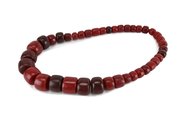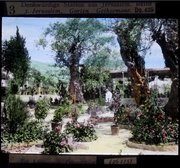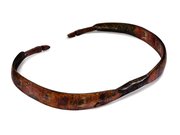
Andalusi Capital
Museum of Islamic Art
- Title:
- Andalusi Capital
- Production place:
- Madinat al-Zahra
- Date:
- 953 - 960
- Period:
- Umayyad of al-Andalus
- Title:
- Andalusi Capital
- Production place:
- Madinat al-Zahra
- Date:
- 953 - 960
- Period:
- Umayyad of al-Andalus
- Material:
- Marble
- Technique:
- Carving
- Dimensions:
- 26.5 × 26.5 cm
This capital was possibly found in Madinat al-Zahra (‘the Shining City’), a palace-city of al-Andalus located in the outskirts of Cordoba. It was built in 325 AH/936 CE by ‘Abd al-Rahman III (r. 300-350 AH/912–961 CE) to glorify and legitimate his self-proclaimed caliphate. The city was a significant symbol of power and included an important imperial workshop where the best craftsmen and artisans were brought from all over the Islamic world. One of the various objects that were produced in the workshop were these capitals. Although very similar in shape, capitals of this period show individual styles. Craftsmen reused the structure of Roman Corinthian capitals while developing a new openwork carving technique that would become characteristic of the 4th century AH/10th century CE production in al-Andalus, therefore creating a style that distinguishes the artistic production of this region from the rest of the world. The high relief technique was achieved by first scoring the pattern in the workshop then by deep carving the stone block on site after they were installed. This example consists of two registers, separated by a horizontal line or rope of repeated geometric motifs: two rows of acanthus leaves and four volutes carved in relief. Some of these capitals can still be observed in situ in the Salón Rico, Abd-ar-Rahman III’s audience hall, where he received official delegations and ambassadors from foreign countries. This specific example corresponds, in particular, to the pieces found in the Great Portico, built between 341 and 348 AH/953 and 960 CE.



